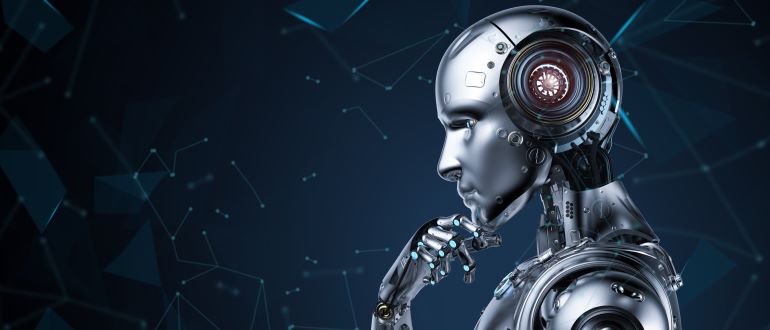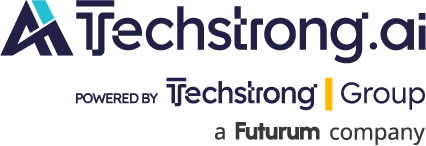
NEW YORK – It was just another AI show, this time in midtown Manhattan in late September 2025, and executives from Cloudera Inc. couldn’t predict with any certainty where the industry was headed.
For more than 18 months, the mystery unfolded via speculative quote or educated guess, yet the story remained the same: The brightest minds in tech mulled over the implications of a phenomenon they had little control over.
“It’s an interesting moment in time. There are high hopes and big expectations,” Daniel Meyer, chief technology officer at Camunda, said in New York in October. “The question is, ‘Is it a bubble?’ Yes and no. We’ve been oversold on expectation and there is the actual potential.”
“We’re in the decade of AI, but is it dot-com’s 1997 or 2000?” We may find out in the next 18 months,” he said.
Fletcher Previn, Cisco’s chief information officer, ventured a theory in San Diego in June 2025. He envisions the promise and perils of AI in the workplace. “We’re on the precipice of AI doing wonderful and terrible things for us all,” he acknowledged.
And in New York, Cloudera’s Chief AI Architect, Manasi Vartak, summed it up thusly: “In my 15 years in the AI field, we have gone from analytics, then machine learning, AI, agentic AI, and soon AGI. Change is the only constant, and everyone is aware of the importance of guardrails.”
From San Diego to New York to Barcelona to Las Vegas to Seattle to Boston to Las Vegas again, there was an endless discussion on how AI – and autonomous agents, in particular – will impact jobs. Working side by side with robots carries with them as many promises of Utopia as well as dystopian consequences.
In Pittsburgh, researchers at Carnegie Mellon University’s Robotics Lab in February 2025 showed off future humanoid models that assist people and agricultural contraptions that pick and harvest apples and other crops. Yet prohibitive costs and evolving reasoning models in the devices made it hard to put a timetable on their commercial availability.
During a seemingly continuous gauntlet of AI agent announcements and trade shows across the U.S. and Europe, the narrative became a dull refrain — even a high-tech version of brainwashing. The narrative, at least, was easy to follow. AI agents and physical robots are on the way – we just don’t know precisely when and to what extent. And, no, we have no real-life examples to share yet.
Multiple requests over the months for case studies were met with promises but little to no follow-up from companies.
So how do we land in this muddled mess, where workers fear for their jobs while executives push for rapid change regardless of cybersecurity and IT damages in the form of a catastrophic event?
Let’s start with corporate boards.
They have urged, if not outright demanded, that their C-suite of executives jump on the AI train immediately and fix mistakes as they adopt the technology. And there will be mistakes, as employees are trained in the use of AI.
But boards, for now, are fixated on instant productivity through streamlined operations and fattening profit margins. This has left the future of employees in the air – as they either thrive with an autonomous workmate or find themselves out of work.
A roiling job market underpins the situation.
The Agentic Age
The AI industry is entering what MIT researchers call the Agentic Age. Yet beneath the hype lies a more complex reality: While market analysts predict explosive growth and enterprises rush to adopt AI agents, recent studies reveal a stark implementation gap that threatens to slow the revolution.
The numbers are staggering. The global AI agents market is projected to surge from $5.29 billion in 2023 to $216.8 billion by 2035, representing a compound annual growth rate exceeding 40%, according to market research. Other forecasts are similarly bullish, with MarketsandMarkets projecting growth to $47.1 billion by 2030.
Enterprise appetite appears insatiable. Recent industry surveys indicate that 85% of enterprises are planning to adopt AI agents in 2025, with small and medium-sized business adoption expected to reach 78%.
“Companies are developing and deploying autonomous, multimodal AI agents in a vast array of tasks,” said Sinan Aral, director of the MIT Initiative on the Digital Economy. “But our understanding of how to work with AI agents to maximize productivity and performance, as well as the societal implications of this dramatic turn toward agentic AI, is nascent, if not nonexistent.”
That knowledge gap may explain a troubling finding from MIT’s NANDA report released in August 2025: Approximately 95% of generative AI pilot projects at companies are failing to deliver financial savings or profit uplift, despite significant enterprise investment.
It’s a sobering statistic that suggests the path from pilot to production remains treacherous for most organizations.
Beyond performance metrics, the MIT research reveals how work itself transforms when humans collaborate with AI rather than other humans.
Human-AI pairs communicated more overall but sent far fewer social messages. They spent more time on task execution and less time building rapport or discussing emotions. The work became more focused, more efficient, and perhaps less human. The pairing excelled at creating text but underperformed human-human pairs at generating images. When the work was deployed in real advertising campaigns on social media, however, both approaches performed equally well, suggesting that different collaboration models may serve different purposes.
The contrast between market projections and implementation realities highlights a critical challenge in which the technology is advancing faster than our understanding of how to deploy it effectively.
Stanford University’s Human-Centered AI Institute echoed these concerns in their 2025 AI Index Report, which tracks trends across AI research, development, and deployment. The report documents rapid advancement in AI capabilities alongside questions about real-world application and societal impact.
For MIT’s Aral and his team, the solution lies in rigorous, large-scale experimentation. “At the MIT Initiative on the Digital Economy, we have doubled down on analyzing rigorous, large-scale experiments to help managers and policymakers unlock the promise of agentic AI while avoiding its pitfalls,” he said.

